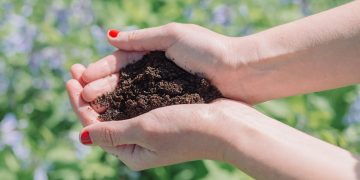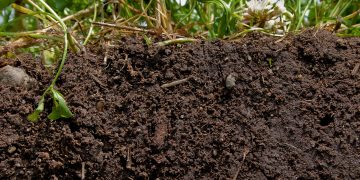If you want to grow the best and hottest chillies, you should start the seeds indoors as early as January (if there are late frosts, sometimes you can get away with starting as late as March) – the hottest varieties are the ones that often need the longest growing seasons. Chillies need a lot of warmth to germinate so if you can, use a heated propagator or use a warm airing cupboard.
Sow chilli pepper seeds on the surface of a moist, seed compost with good drainage and cover with a fine layer of compost or vermiculite. Place seed trays in a propagator with a temperature of 18-25C (64-77F). If you don’t have a propagator, use cover your seed trays to retain the heat.
The germination of chilli peppers normally take 7-10 days, after which you can move your seedlings to a heated greenhouse or a sunny windowsill. Keep the compost evenly moist but don’t let it get soaking wet.
When your plants are big enough that you can handle them without breaking, transplant them into individual 7.5cm (3″) pots of compost until the risk of frost passed, and they are large enough to be transplanted to their final soit. From an early start, this could be from May onwards.
Grow chillies in individual pots, later transplanting them into 2 liters containers, or plant them in grow bags allowing three plants per bag, depending on their size. Place pots or growbags under cover in a warm spot, greenhouse, conservatory, or polytunnel.
It is possible to grow your chillies outside in a sunny, sheltered spot. Acclimatize your plants gradually to the outdoor conditions over one to two weeks. Then you can transplant them into well prepared beds of moist, fertile and well-drained soil. Space plants 50cm (20″) apart from each other on all directions. Or if you don’t have much space, try growing them indoors on a sunny windowsill.

Water chilli pepper plants regularly throughout the growing season, and once the first fruits have set, fertilize them weekly with something like a high potash tomato fertilizer. Also remember to:
• Try pinching out the tip of the first flowering shoots to promote branching and a better harvest.
• Water the plant regularly but be cautious not to overwater. It’s best to keep your soil a little dry because slightly stressed chilli plants will produce hotter peppers. Some varieties of chilli pepper require staking.
• Use a thick layer of organic mulch around the plants to help maintain moisture and prevent unwanted weed growth.
You can grow chilli peppers indoor if you provide them enough light and the right temperature. If insects don’t have access to the flowers to ensure good pollination, you will have to do it manually. Hand pollinate the chillies by tickling the center of each flower with a fine paint brush.
Chillies require heat and long sunny days to ripen. If you start early, this will not be a problem, but later sowings may leave your peppers vulnerable the cold as summer days begin to shorten.
If your crop is not ripe yet, bring the plants indoors and let them ripen on a warm sunny spot. Harvest chillies singly by cutting them from the plant with clean tools. Chilli peppers that are grown outdoors should be harvested before the first frost arrives.












